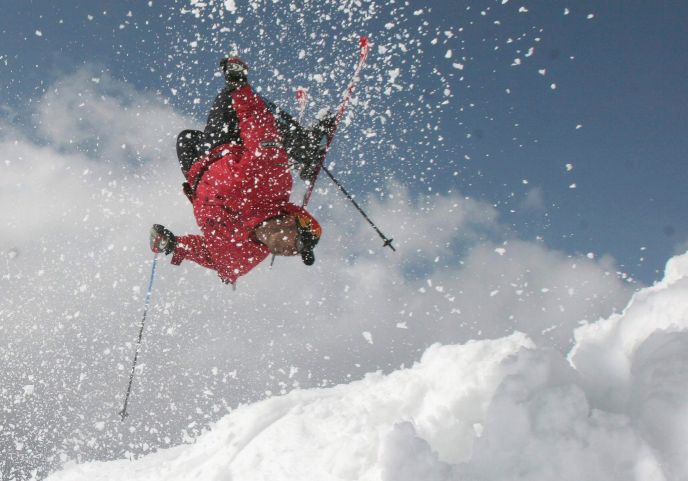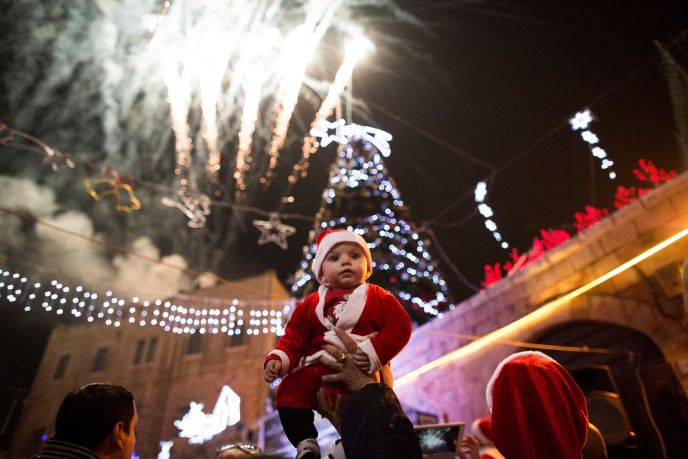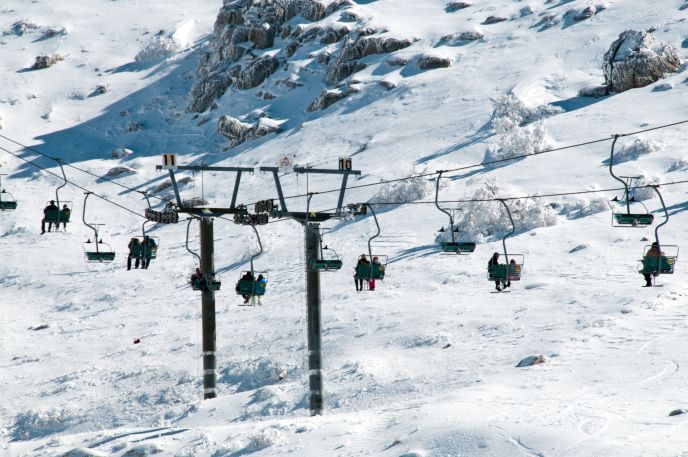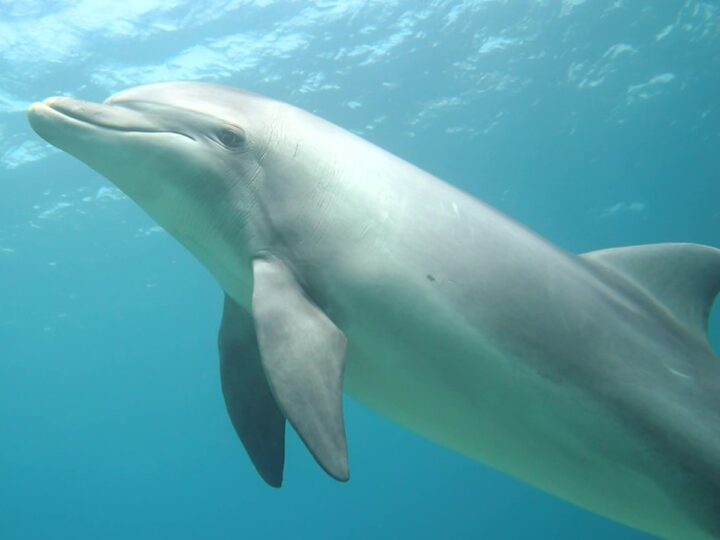During December, January and February, Israel can be cold and rainy, but it can also be warm and sunny. Regardless of the unpredictable weather, Israel has so many different climate zones in a small geographical area that you can enjoy the winter months hiking in snow up north, basking in sun down south, or playing it safe with indoor activities.
And whether you’re Jewish or Christian, there’s no place like Israel for the winter holidays – after all, this is where they originated thousands of years ago!
ISRAEL21c offers 20 suggestions to roll out your winter in Israel
- Hanukkah

This year, the weeklong Festival of Lights begins at sundown on December 16. Walk along the alleys of Jerusalem’s Old City or Nachlaot neighborhood to see the hanukkiyot (menorahs) lit inside glass boxes on windowsills, or join a public lighting at the Mamilla Alrov Mall and the Western Wall. Lots of special events will take place across the country, most of them including sufganiyot (see #11). Check out our “Top eight things to do in Israel on the eight days of Hanukkah” for more ideas.
- Christmas in the Holy Land
Bethlehem and Jerusalem come to mind when you think of Christmas, and indeed there are tree lightings, liturgical concerts and markets to enjoy in these cities. But the tens of thousands of Christian tourists who come to Israel every December also find seasonal events taking place from Haifa’s annual month-long Holiday of Holidays extravaganza to the Christmas parade in Nazareth. See ISRAEL21c’s “Top 10 ways to celebrate Christmas in the Holy Land” to get you started.
If enough snow falls, there’s only one place to ski in Israel, and that is Mount Hermon at the northern tip of the country. Rising 9,230 feet above sea level, Mount Hermon has a vertical drop of just 1,552 feet, making it ideal for intermediate and advanced skiers. Tubing and sledding also are available.

Though the Hula Bird Festival ended November 23, according to the Israel Birding Portal the bulk of the 30,000 cranes wintering in the Galilee’s Hula Valley continue to touch down in early December. This month also marks the arrival of up to 20 percent of the world population of rare white-headed ducks, which favor the reservoirs of the Judean Plains.
In January and February, head to the Galilee to see cranes and white pelicans in the Hula; gulls, herons and waders at Ma’agan Michael; and thousands of wintering water birds, songbirds and birds of prey. In the western Negev, Eastern Imperial eagles Peregrine falcons can be spotted, and by mid-February you’ll see early spring migrators such as steppe eagles swooping in over Eilat.
Speaking of Eilat, this Red Sea resort is just right for those who prefer warmer winter climes. The Red Sea Jazz Festival takes place every February at the port. Plan on snorkeling, diving, swimming, kite-surfing or boating, because the water here never gets below 21C (70F). If the winds are exceptionally strong and the air temperature dips below 20C, however, you may get free admission to the Dolphin Reef for the day.
- Jacob’s Ladder Festival, December 5-6
Known as “Israel’s friendliest musical and social event,” this twice-yearly bluegrass, folk, country, blues, Irish and world music extravaganza has been taking place since 1976 on the grounds of Nof Ginosar Hotel on Lake Kinneret (Sea of Galilee). This winter’s lineup includes Jerron Paxton, the Joni Mitchell Project, the Dejavu Band and others.
Hamshushalayim (a mashup of the Hebrew words for Thursday, Friday, Saturday and Jerusalem) takes place every weekend in December at the city’s cultural, tourism and culinary institutions. Street theater, night tours and musical performances are part of the fun. Many museums, theaters and galleries are open to the public each of the four Thursday nights free of charge, and Jerusalem’s restaurants and hotels offer special deals.
- Wash down your sufganiya with some sachlav
Warm your belly on a cold day with spongy sufganiyot, the filled donuts hawked by every bakery all December long in abundant flavors ranging from halva to vodka melon. Saidel’s Artisan Baking Institute offers tour groups “The Secret of the Donut” workshops for ages three and up, in English. Prepare to gain a few pounds.
For a really exotic chaser, wash down your donut with “the hot cocoa of the Middle East,” sachlav (or sachlab), a thick milk-based cinnamon-laced drink made with ground orchid bulbs. Street vendors and some cafés sell it.
- Party on New Year’s Eve
Israelis, like many Europeans, call the secular New Year’s Eve “Sylvester,” taken from the name of the pope whose death on December 31 was traditionally marked with a feast. Since midnight December 31 is not a Jewish milestone, you won’t find Sylvester parties in any kosher-certified establishments in Israel. But many bars, clubs and pubs in Tel Aviv and Jerusalem throw huge celebrations.
10. Feelin’ Blues, January 23-26
Dance your winter blues away at Tel Aviv’s fourth annual Feelin’ Blues event. In addition to daily opportunities to strut your stuff on the floor (dancers are grouped by level of expertise), every evening ends with a dance party at a different venue. Get in the groove with a pre-event “Blindy” (that’s blues and lindy hop) party on January 22 at Bikurey Ha’itim Center.
11. Commune with nature on Tu B’Shvat
Tree-planting is the traditional activity on this “Jewish arbor day,” this year falling on February 4. Because we’re in the midst of a sabbatical year when the soil is left fallow, plantings won’t take place as usual. However, Tu B’Shvat is still a perfect excuse to get out into Israel’s forests and ponder the awesome fact that Israel is one of only two countries in the world that entered the 21st century with a net gain in its number of trees. For a more hands-on experience, sign up (with a group) for the KKL-JNF Forester for a Day program in the Ben Shemen, Carmel, Birya or Lahav forests.
12. International Book Fair, February 8-12
This biennial event, first held in 1963, will move to The First Station in 2015. Some 600 publishers and authors from more than 30 countries will display more than 100,000 books in different languages. Highlights include the awarding of the Jerusalem Prize to a writer whose work best expresses and promotes the idea of the ”freedom of the individual in society.” The Literary Café, featuring encounters between famous Israeli and foreign writers, is open to the public free of charge and always attracts a crowd.
Mid-February to late March is peak bloom time for kalanit (anemone), rakefet (cyclamen), narkis (narcissus) and tourmus (lupine), among other wildflowers. Every weekend in February, the KKL-JNF hosts a free Scarlet South Festival where visitors can marvel at the red anemones in the Reim Recreation Area and Ruhama Forest in the northwestern Negev. Another favorite spot: Givat Hatourmusim (Lupine Hill) in the Elah Valley.
Tentatively scheduled to begin February 20, 2015, the fourth annual International Jerusalem Ice Festival takes place at The First Station. Professional ice sculptors from China fly in to create a chilly fantasy world with a different theme each year. Also on the bill are ice shows and icy treats and other frosty surprises.
15. Tel Aviv Marathon, February 27
This has become one of the biggest international sports events in Israel. Last year, a record 2,600 runners signed up for the full marathon (42.2 kilometers) and a record 100,000 tourists and locals watched the 40,000 runners from Israel and around the world. Race weekend turns the entire city of Tel Aviv into one big sports party.
16. Meet the crocs
No, not the shoes; the big reptiles. Hamat Gader Park near the Sea of Galilee, boasts natural thermo-mineral springs that chase the chill away. Forty acres of tropical parkland house about 200 crocodiles, alligators and other reptiles. Down south in the Negev, where it’s always warmer, visit CrocoLoco for a guided tour of the swamps where hundreds of African Nile crocodiles enjoy their adopted home in Israel.
17. See the sea

Without traveling as far as Eilat, you can lounge on the sand or do water sports during the winter at Israel’s many Mediterranean beaches. The sea’s temperature generally doesn’t get below 17C (62.6F), so if you’re properly outfitted with a wetsuit you can surf to your heart’s content. If a storm brews up, join all the Israelis who flock to the shore to watch the waves of the normally mild Mediterranean swoop way up high.
18. Explore Beit She’an
Israel’s Beit She’an Valley is consistently cited as one of the top 10 hottest places on Earth, with temperatures reaching as high as 53.9C/129F. That’s why many tour guides recommend planning your exploration of the expansive archeological site in Beit She’an National Park for the winter months. An earthquake in 749 CE left behind ruins of grand colonnaded streets, a bathhouse, theater and shrines, all of which Israel’s Antiquities Authority reconstructed. Don’t miss the acclaimed She’an Nights multisensory, multimedia show.
19. Jerusalem Winter Madness Festival
Sha’on Horef, a.k.a. the Winter Madness Festival, takes place on the streets of Jerusalem’s city center every Monday in February. Live music, dance, street theater, video art, cooking workshops, designer fairs, artist master classes, comedy shows and exhibitions are all planned.
20. Nature walks
When there’s no rain in the forecast, winter is great for hiking in Israel because it’s not too hot and the landscape is unusually green. For a list of trails to explore, see ISRAEL21c’s “Get walking: The top 10 hikes in Israel.”





























